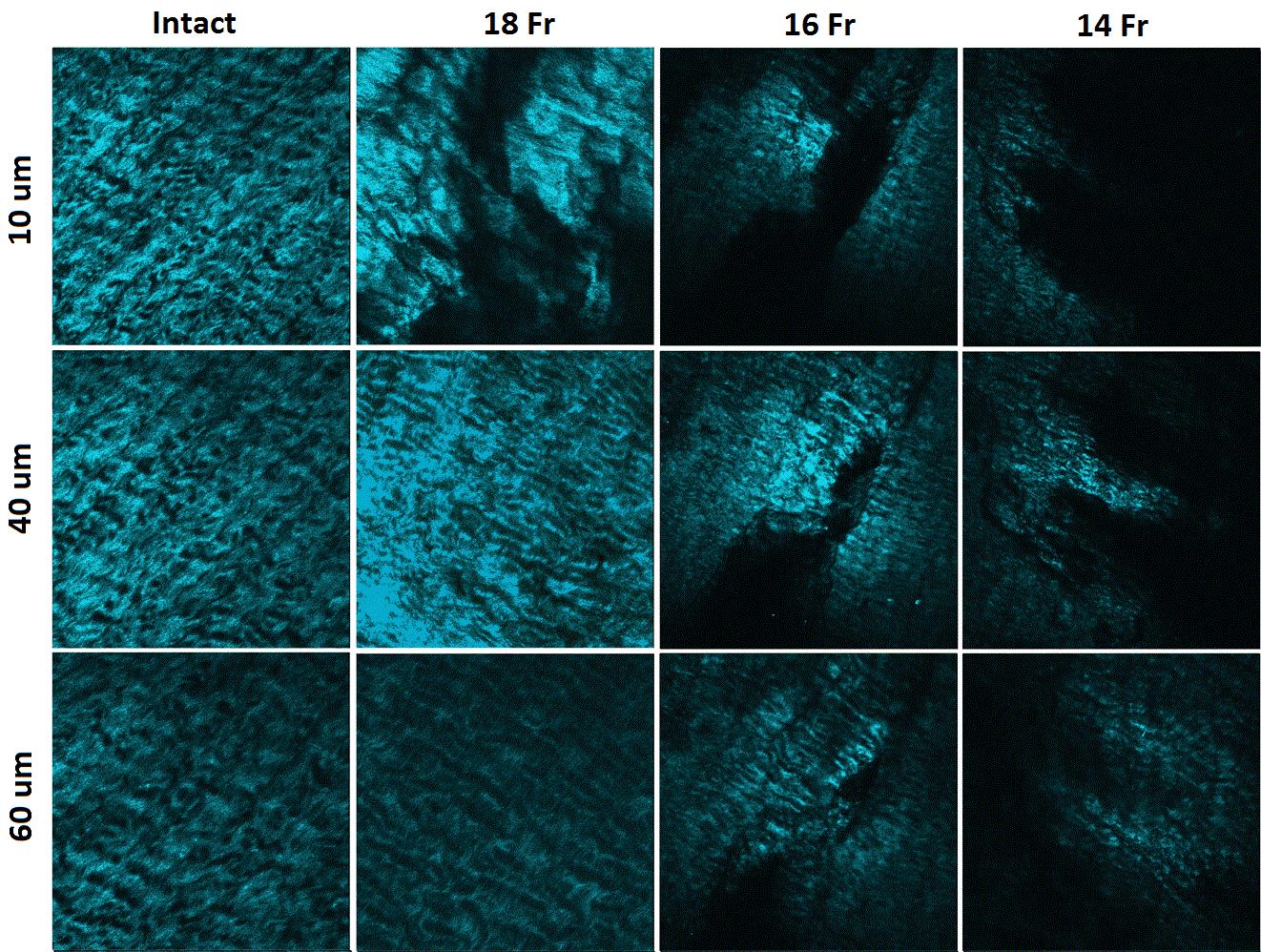Research Projects
Crimping Effects on Transcatheter Heart Valve Leaflets
Transcatheter aortic valve replacement (TAVR) is gaining expanded indications for the treatment of severe aortic stenosis. An important difference between surgically implanted bioprosthetic and transcatheter aortic valves is the process of crimping which is used in preparation of transcatheter valves. The aim of this project is to qualitatively and quantitatively characterize the damage to the pericardial leaflets caused by crimping. This is achieved through the use of advanced microscopy and developed in house codes as well as biochemical characterization assays.
We have developed a damage index for transcatheter heart valves. Based on the calculated damage indices and analyses of the raw images, we found that crimping does measurable damage to the leaflet tissue that persists with time. Induced damage to the tissue leaflets may have significant effects on the longevity of TAVR once compared to surgically implanted valves. Additionally, structural changes may result in complications such as thrombosis, early calcification or endocarditis. This information provides a potential mechanism of early device failure, and should be taken into consideration when choosing the best option for patients. Future valve design may be optimized by excluding or minimizing the exposure of leaflets from crimping thus avoiding this damage and allowing for folding the leaflets into the stent after expansion. Although the result of the study is not directly related to any of the commercially-available heart valves, it will provide sufficient information about crimp-induced damage to pericardial leaflets. More information can be found here.
View all research projects

